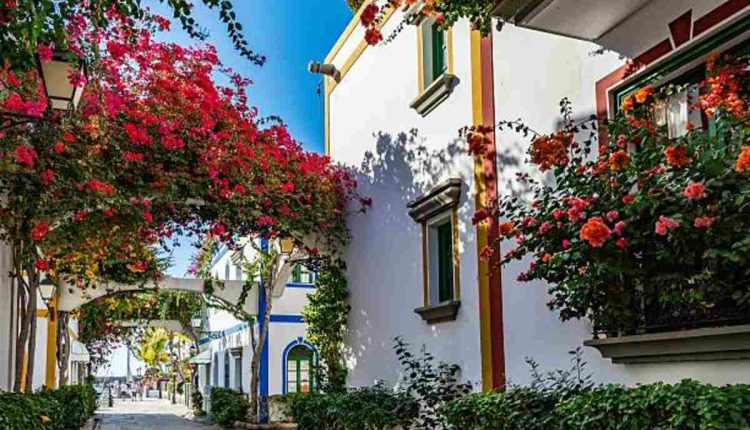Cuba National Flower
Cuba is well known for many things, but one flower that stands out among its flowers is the white mariposa, which stands as a symbol of rebellion and independence.
Flower of Freedom or White Butterfly Jasmine and Hedychium Coronarium is an evergreen perennial in the ginger family that requires high humidity levels for optimal growth. While in warmer climates, it remains evergreen, USDA zones 8-11 experience leaf drop-off before reappearing in springtime.
Hedychium coronarium
Hedychium coronarium, commonly known as white mariposa or Flor de Mariposa in Cuban parlance, is the national flower. A perennial herb with long green leaves and tubular flowers that produce an aromatic scent, it was officially chosen as Cuba’s national flower in 1936 for its cultural, historical, and symbolic importance to Cuba.
This plant, native to India but now abundant throughout Cuba, is widely popular as an ornamental and natural feature in gardens, patios, and natural settings like riparian areas and forest edges. Furthermore, traditional medicine practitioners have used its components as remedies against various illnesses.
To select the national symbol flower, a committee of botanists was assembled. Their selection process involved examining and comparing several flowers; Water Hyacinth, Night Galan, and Lily of San Juan were considered potential candidates before ultimately winning with 52 votes for White Mariposa as its winner.
Although this plant offers numerous advantages, it has considerable negative environmental repercussions. It is an invasive species in some regions of the world and forms extensive thickets that prevent native species’ regeneration; furthermore, it competes with other crops and has high nutrient demands, necessitating proper management techniques to control it effectively.
Mariposa
The White Mariposa, also called White Ginger Lily or Butterfly Jasmine, was chosen as Cuba’s national flower in 1936 and represents purity, rebellion, and independence. Women patriots used this flower during wars for independence against Spain to pass messages to battlefronts, while religious rituals also regularly included it as offerings.
Flowers with this aroma make an excellent decorative and aromatic accent to any yard or garden, often in humid environments like yards and gardens of homes in rural settings. Furthermore, public places and parks may also plant this plant species to add visual interest while offering its scent-besotting flowers as decoration.
Other popular Cuban flowers include orchids, roses, and jasmine; this latter flower is especially revered due to its association with freedom and the fight against dictatorship – it even served as the symbol for revolutionary movements led by the Mirabal sisters (Patria, Minerva, and Maria Teresa) known collectively as Las Mariposas or Butterflies.
If you plan to visit Yosemite or other Sierra Nevada attractions, why not add Mariposa as part of your itinerary? This charming historic town in the foothills provides the ideal environment for hiking, biking, shopping, and dining experiences – Mariposa boasts several fantastic restaurants and local businesses that pay homage to its gold rush history.
Orchids
Orchids have long been celebrated for their ability to adapt and thrive in complex environments, symbolizing strength and resilience. Furthermore, their exotic beauty makes them popular as luxury symbols – becoming even more significant when cultivating them can cost hundreds of dollars and up. Orchids tend to be expensive to maintain and develop. Orchids also become symbols of wealth and status if grown indoors as houseplants.
Cuba’s national flower is the white mariposa or butterfly jasmine (Hedychium coronarium), an aromatic ginger relative chosen as an effective solution to help women patriots pass on secret messages to soldiers during Cuba’s struggle for independence. Its intricate branches offered the ideal place to hide private letters. Eventually, it was chosen as Cuba’s national emblem in 1936.
This endemic plant thrives in humid environments such as lagoons and can also be grown indoors, often hanging from ceilings or garden trellises in Cuban homes – an increasingly popular method for cultivating flowers in this country.
Orchids can be divided into two broad categories based on their growth habits: monopodial orchids grow upright with oppositely arranged leaves that produce flower stems from beneath an uppermost leaf, such as those found in Phalaenopsis or Vanda. Sympodial orchids are much more commonly seen spreading horizontally along their old rhizomes by sending out shoots that produce leaves and flower scapes like those seen with cattleya, Cymbidium, or Oncidium species.
Other Flowers
Cuba’s flowers and plants are captivating, fragrant, vibrant, historic, and symbolic of its history and symbolism. From white jasmine of mariposa flowers to royal palm trees in this Caribbean nation, flowers abound throughout Cuban landscapes – from coastal mangroves and wetlands, tropical rainforest and dry forest, lowland montane cloud forest terrain, lowland montane cloud forest terrain as well as desert-like terrain all cloaked in various shades of green claddings – boasting one of most diverse Caribbean island ecosystems species diversity across this Caribbean nation!
Hedychium coronarium, also known as white ginger lily and mariposa, is the national flower of Cuba. Designated as the nation’s flower in 1936, this aromatic perennial holds significant cultural, historical, and symbolic meaning for Cuba. These tubular flowers with monopetalous petals boasting pleasant floral scents bloom from long green leaves late summer through early autumn, as used by women patriots during the independence war against Spain as cover for covert communication channels.
Cuban trogon birds are one of the island’s most iconic flowers and birds, being national icons that inspire its songs and literature. Additionally, Cuba is home to various other forms of fauna, including bee hummingbirds – which may or may not appear!


